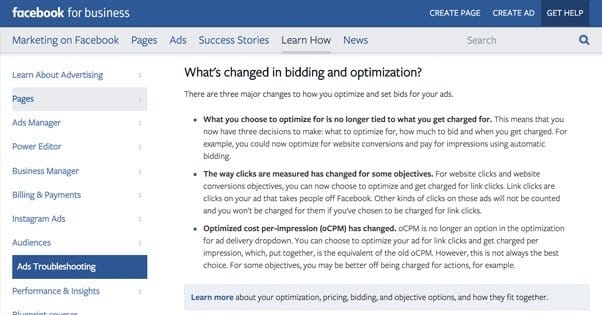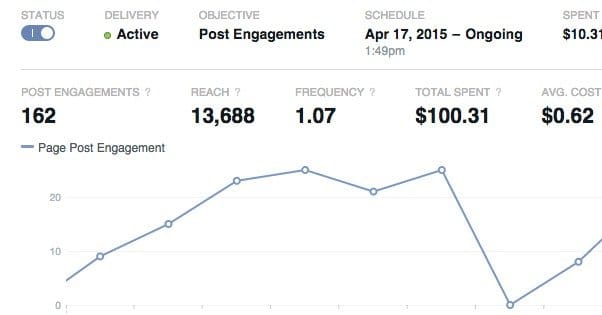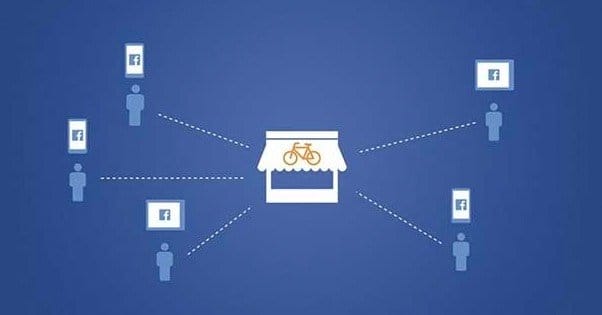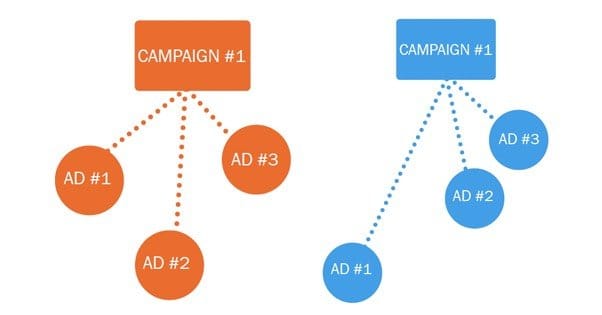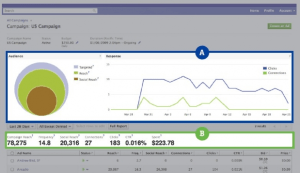 Written by ContentPowered.com
Written by ContentPowered.com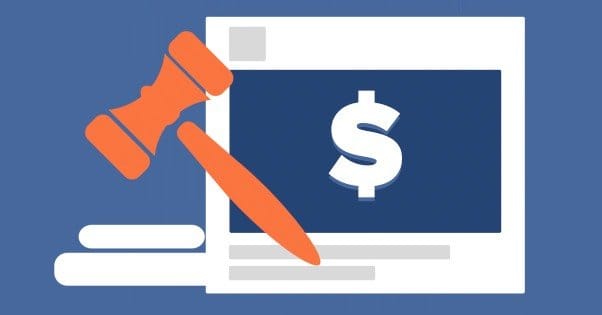
If you’re a long-time Facebook marketer, you might have noticed something a little concerning in the past week or so. Facebook made some changes to their bidding, and while the changes have the potential to be very good, they’re complex and will require some adaptation. You may very well want to change your ad campaigns because of them. What are the changes, what do they mean for ad bidding, and what choices can you make now that they’ve taken effect?
The Changes
Facebook’s language has this to say:
- What you choose to optimize for is no longer tied to what you get charged for. This means that you now have three decisions to make: what to optimize for, how much to bid and when you get charged. For example, you could now optimize for website conversions and pay for impressions using automatic bidding.
- The way clicks are measured has changed for some objectives. For website clicks and website conversions objectives, you can now choose to optimize and get charged for link clicks. Link clicks are clicks on your ad that takes people off Facebook. Other kinds of clicks on those ads will not be counted and you won’t be charged for them if you’ve chosen to be charged for link clicks.
- Optimized cost per-impression (oCPM) has changed. oCPM is no longer an option in the optimization for ad delivery dropdown. You can choose to optimize your ad for link clicks and get charged per impression, which, put together, is the equivalent of the old oCPM. However, this is not always the best choice. For some objectives, you may be better off being charged for actions, for example.
All of that is directly quoted from the linked Facebook page, and it describes the changes made to bidding. The absolute biggest takeaway here is that the oCPM optimization structure is gone. This is huge, because it was highly recommended as a way to build brand awareness for cheap.
This gives you more granular decisions you can make to optimize your ads, but it also means more decision-making and more testing. When you choose how you want to optimize your ads, you can optimize for different actions within an objective. For example, when choosing the website clicks objective, you can optimize for website link clicks, or for impressions like CPM, or for reach. Bidding can be either automatic or manual, and you can choose how you want to be charged – for link clicks, for impressions, or what have you.
A Boost to CPC
One of the reasons many marketers told people to go for oCPM with Facebook bidding is because CPC was fundamentally broken. One promoted post ad, for example, would have a link to your website, but also a link to your profile, because it’s a Facebook post. If you were choosing CPC bidding, you’re trying to get people to go to your website, and you’re trying to pay for the clicks that lead people to your site. However, under the old structure, people clicking to go to your profile rather than following your link would still count as a click, and would still charge you.
This was a problem, because CPC tends to be significantly more expensive than something like oCPM, so every click that you paid for that didn’t send a visitor to your site felt like Facebook stealing money from you.
The new changes eliminate this by redefining what counts as a website click. Now, clicks have been redefined as “link clicks” for the purposes of the website click and website conversion objectives. That means no more paying for the wrong type of clicks, which by default means CPC becomes a better choice.
Now, you’ll still have to make the decision about oCPM, but wait! oCPM as we know it is gone now. In order to mimic the functionality of oCPM, you need to set your objective as link clicks – clicks to website – and set your payment type to per-impression. This is the same thing as oCPM, but it requires two settings rather than one. However, that means you have greater control over it. You’re not limited to either oCPM or CPC for your website clicks, you can change it up a bit.
Chances are that paying per impression while optimizing for link clicks – the new version of oCPM – is going to be cheaper than paying per link click while optimizing for those clicks. As usual, it’s the difference between CPC and CPM. CPM has a lower cost per action because it’s charging you for a view, while CPC is charging you for a click, but you may need a lot of views to get a click, and if you don’t get that click, you’re still paying for views.
Introducing Brand Awareness
Alongside these announcements, Facebook added the Brand Awareness objective. Prior to now, if you wanted to use ads to build brand awareness, you would probably be paying for ads with various objectives. You might have one set of ads trying to get people to follow your page, and another set trying to get people to visit your website. All of these would be oCPM because that would bring in the largest audience for the cheapest fees. You didn’t necessarily care about the objectives themselves, you just wanted as many relevant people to see your ads as possible. Brand awareness, right?
The new Brand Awareness objective allows you to change your optimization between two options; brand awareness and reach. The brand awareness optimization within the objective means Facebook will strive to show your ads to people most likely to pay attention to them. Conversely, the reach objective will have Facebook trying to show your ads to as many people as possible, even if those people are less likely to care about your brand.
I have a word of caution here: choosing brand awareness as an optimization scheme is NOT a replacement for good targeting. Facebook’s targeting can only do so much. In fact, if you have very nice targeting with a narrow target audience, using reach will be better, because you’re reaching more of the people you already know through prior testing will be interested in your brand.
Be aware that brand awareness as an objective is still being rolled out around the world. It started in the US and Australia as ground zero, but is expanding to accounts that are located elsewhere. If you don’t see it yet, give it a few more days.
Bidding Options
All forms of ads have two bidding options; manual and automatic. Some optimizations within some objectives will require one or the other. For example, App Installs now only allows automatic bidding, while Website Clicks allow both. This is noteworthy because that objection previously only allowed automatic bidding, unless you aimed for impressions or reach, which required manual bids.
Overall, there’s a number of changes to the bidding structure, so you will have to play with your ads to see what has changed. In some cases, you were locked in before, but are now free to change. If you prefer, you can see a rundown of all of the objectives, their available optimizations, and the bid structures here in Jon Loomer’s post.
One thing to watch out for is any changes Facebook may have made in this transition. Some people are reporting that the transition to the new system resulted in much higher costs for their ads under automatic bidding. Only their budget constraints kept them from running up unfeasibly high bills. It’s a good idea to review the costs of your ads and, if necessary, set them to manual bidding and set the price to what it used to be, with a little flex.
Note that if you were using CPC before, rather than oCPM, your ads will be largely unchanged. It’s only if you were using oCPM that the new system will have some dramatic effects.
Another thing to note is that there is a difference between the objectives and optimizations for website clicks and website conversions. Facebook has a huge pile of data to analyze behavior, and they know that there are people out there who love to click ads but generally have no intention of converting. There are also people who very rarely click ads, but when they click, tend to convert at a high rate. The groups aren’t connected, so it’s a good idea to pick the one you actually want. You can’t “game the system” by optimizing for website clicks and hoping you’ll get more conversions cheaper than you would by optimizing for conversions.
Well, that’s not strictly true. The fact is, you might get better cost per action with website click optimization, depending on your target audience. What you really need to do is test the variations and see which performs better.
Testing, Testing, 1 2 3…
Testing has been, is, and always will be the lifeblood of successful Facebook ads. What these new changes do is give you more detailed ways to test your ads. Even just being able to switch between automatic and manual bidding is a huge change.
Now, automatic bidding is always going to be more expensive. The reason for this is because, within your target audience, you have tiers of users. At the top are the people who are most valuable to you, as determined by Facebook’s massive data stores. At the bottom are the people who just happen to meet the criteria but aren’t really interested at all. Automatic bidding will attempt to target the top tier first and go from there, priced accordingly. These people are going to be more expensive to reach.
Manual bidding essentially sets a cap, which makes Facebook take a different strategy for showing your ads. They take the budget you have set and optimize it as much as possible, but there’s only so much they can do within your restrictions. This is where you can run into issues like with CPC. If a click costs $10 and your maximum budget is $5, you won’t get any clicks. You’re not paying enough to be able to afford them. CPM usually won’t have that problem, but some people are reporting high enough costs that you might encounter it.
Facebook also has minimum payments. For manual bidding, it’s $1. For automatic, it’s $5. Depending on your settings, you might be able to get a lot of mileage out of those minimums, or you might get nothing.
What can you test with Facebook ads?
There are a lot of options for what you can test, and the new changes have added even more to the pot.
- Ad image. There’s an infinite variety of images out there, and you can test them until the cows come home and be no closer to any one true solution. The problem, of course, is that you’re not narrowing things down. Stick with themes and illustrations, change up colors, styles and layouts.
- Ad text. Copy is always important. You need something relatively like clickbait to get attention and earn clicks, but you can’t be too much like clickbait in actuality lest you turn people away. This testing includes both the copy of the body and the headline, as well as any text in the image. Make sure to test them separately.
- Ad placement. News feed ads tend to be more effective than sidebar ads, but also more expensive, whereas sidebar ads can be great for attractive little brand awareness ads. Mobile ads are a whole other beast.
- Ad landing page. Different landing pages can make a huge difference, though that falls under the heading of landing page optimization rather than Facebook ad optimization.
- Ad targeting. There are an absolute ton of targeting options, including country, gender, age, income level, education level, relationship status, and more broad categories like purchase behaviors and interests. On top of all of that, you can create custom audiences out of your own audience, out of a mailing list, out of competitor lists, and even lookalike audiences. Even with everything else the same, audience targeting tests can easily take up a ton of time and money.
- Ad type. This is your broad objective, like website clicks, app engagement, event responses, video views, and the like. Choosing the right objective has been and will continue to be one of the most important decisions you can possibly make. Always decide what you want to get out of your ad before you pick an objective. If you want traffic, use website clicks or brand awareness. If you want account growth, use page likes. If you want conversions, use website conversions. If you want app installs, use app installs. Always pick the right objective.
- Ad optimization. This is where you can optimize for clicks, for views, or for reach. Clicks will be more expensive but higher converting. Views will be less expensive but less likely to convert. Reach will be the cheapest of all but might not convert at all; use it for brand awareness and the like, where exposure is more important than conversions.
- Ad bidding. Where possible, test between automatic and manual, and adjust your manual bids up and down to find the right sweet spot. If the objective’s optimization mode doesn’t allow the bidding strategy you want, consider changing the optimization.
- Ad charge. This is the bit about how you’re charged. For some objectives this will be fixed, while for others you can choose between CPC or CPM. Some use a variant of CPC like CPA, for example, post engagement only charges you for the actual engagement on your post, not for just clicks or views.
That’s a lot to test, and you don’t have a lot of space to do those tests. Remember, if you’re trying to test more than one variation at a time, it can grow exponentially in both effort and cost. Testing one ad with five different images is fine. Testing each image with five different headlines means you’re running 25 ad variations. Trying to add on another 5 options, like targeting options, to each of those ends up compounding to 125 ads, which is insane to try to manage.
Oh, and if you’re just now experiencing the effects of these changes, be very cautious when using data from the past few weeks as a baseline. The timing of these changes is poorly thought out on Facebook’s part. Thanksgiving, Black Friday and Cyber Monday all just happened, so data will be skewed. Lots of major advertisers are spending tons of money to buy up ads, which will increase the costs of many niches dramatically. Don’t attribute all rising costs to the changes alone.
Now, if the costs don’t drop after the holidays, you may have more of a cause to be concerned. Unfortunately, there’s a month or so before that happens, and that can be a lot of lost time. Optimize as best you can now, but take the data with a grain or six of salt.
